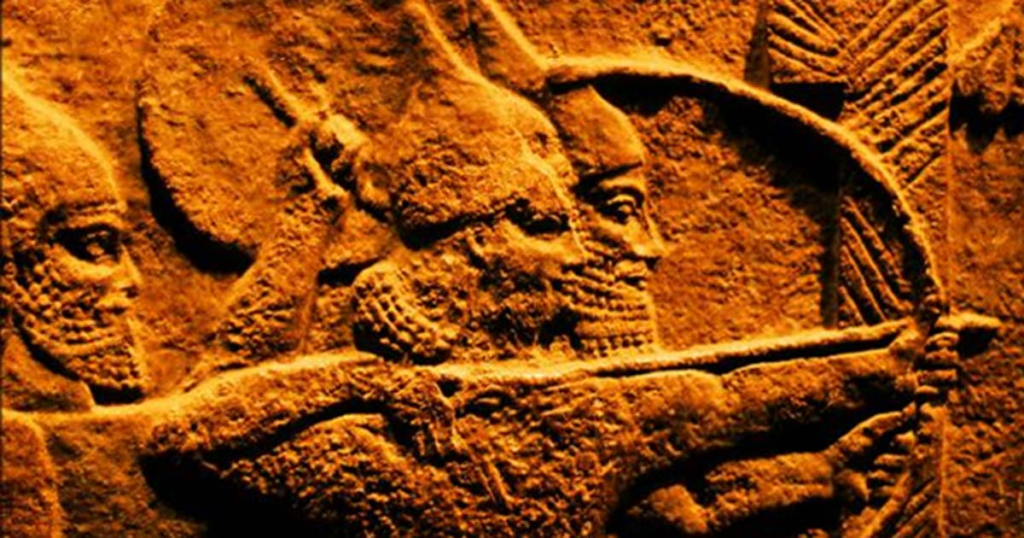ANCIENT TEXT: Solar Dynasty of the Aryans & the Dravidian Lunar Dynasty

The Solar Dynasty, also known as the Sūryavaṃśa, is a legendary Indian dynasty founded by Ikshvaku.
Ikshvaku (Sanskrit Ikṣvāku; Pāli: Okkāka) is a legendary king in Indian religions, particularly Hindu and Jain mythologies. In Hinduism, he is described to be the first king of the Kosala Kingdom, and was one of the ten sons of Shraddhadeva Manu, the first man on the earth. He was the founder and first king of the Ikshvaku dynasty, also known as the Suryavamsha, in the kingdom of Kosala, which also historically existed in ancient India. He had a hundred sons, among whom the eldest was Vikukshi. Another son of Ikshvaku’s, named Nimi, founded the Kingdom of the Videhas. Rama, Mahavira, and the Buddha are also stated to have belonged to the Suryavamsha or Ikshvaku dynasty.
It ruled the Kosala Kingdom with their capital at Ayodhya and later at Shravasti.
The Solar Dynasty is one of the types of Kshatriyas, claiming descent from Surya.
Surya (/ˈsuːriə/ SOO-ree-ə;[9] Sanskrit: सूर्य, IAST: Sūrya) is the Sun as well as the solar deity in Hinduism. He is traditionally one of the major five deities in the Smarta tradition, all of whom are considered as equivalent deities in the Panchayatana puja and a means to realise Brahman. Other names of Surya in ancient Indian literature include Āditya, Arka, Bhānu, Savitṛ, Pūṣan, Ravi, Mārtāṇḍa, Mitra, Bhāskara, Prabhākara, Kathiravan, and Vivasvat.
The solar cult attributed masculinity to the God of the universe.
COSMOS: Life in the Universe – Library of Rickandria
All the purest of Vedic traditions were combined around him:
the science of sacred fire and prayer, the esoteric concept of the supreme God, respect for women and the cult of ancestors; at the heart of the royal power lay an elective and patriarchal principle.
The lunar cult attributed the feminine principle to the Deity, under whose banner the religions of the Aryan cycle deified nature in all ages, for the most part blind, fickle nature, in its most violent and terrible manifestations.
This cult tended towards idolatry and black magic.
He favored polygamy and tyranny based on popular passions.
The Pandavas (Sanskrit: पाण्डव, [paɳɖɐʋᵊ], IAST: Pāṇḍava) is a group name referring to the five legendary brothers, Yudhishtira, Bhima, Arjuna, Nakula, and Sahadeva, who are central figures of the Hindu epic Mahabharata. They are acknowledged as the sons of Pandu, the King of Kuru, but were fathered by different Devas (gods) due to Pandu’s cursed inability to naturally conceive children. In the epic, the Pandavas married Draupadi, the princess of Panchala, and founded the city of Indraprastha after the Kuru Kingdom was split to avoid succession disputes. After the split, the other part of the kingdom was ruled by their cousins, the Kauravas. However, the Pandavas lost their kingdom to Duryodhana (eldest and king of the Kauravas) when Yudhishtira gambled it away during a game of dice. The bet Yudhishtira agreed to was that the Pandavas would hand the kingdom to the Kauravas and go into exile for 13 years. After this time the Kauravas refused to return the kingdom. As a result, the Pandavas waged a civil war against their extended family, and this conflict was known as the Kurukshetra War. With the help of the god Krishna, the Pandavas eventually won the war with the death of the Kauravas, albeit at great cost.
The struggle between the sons of the sun and the sons of the moon, between the Pandavas and the Kauravas, is the subject of the Hindu epic Mahabharata, which is something like a short perspective account of the history of Aryan India before the establishment of Brahmanism.
Kaurava is a Sanskrit term which refers to descendants of Kuru, a legendary king of India who is the ancestor of many of the characters of the epic Mahabharata. Usually, the term is used for the 100 sons of King Dhritarashtra and his wife Gandhari. Duryodhana, Dushasana, Vikarna and Chitrasena are the most popular among the brothers. They also had a sister named Dussala and a half-brother named Yuyutsu.
This struggle is replete with fierce battles and strange endless adventures.
Among this gigantic epic, the Kauravas, the kings of the lunar cycle, remain the victors.
The Pandavas, the noble representatives of the sun, the guardians of the pure cult, are dethroned and exiled.
Hunted, they wander hiding in the forests, finding shelter with hermits, dressed in tree bark, with a wanderer’s staff instead of a weapon. (Wotan!)
Der Ring des Nibelungen – Wikipedia
Fraternities made up of such hermits gave rise to a priestly coup that turned India into a mighty theocracy.
The victory of spiritual power over worldly power, of the hermit over the king, from which the power of Brahmanism was born, was due to the great reformer.
Having reconciled both struggling geniuses, the genius of the white race and the genius of the black race, the solar cult and the lunar one, this godman was the true creator of the national religion of India.
In addition, his mighty genius gave the world a new idea of immense significance:
the idea of a divine Verb or God embodied and manifested in man.
This first Messiah, this eldest of the sons of God, was Krishna.
Krishna (/ˈkrɪʃnə/; Sanskrit: कृष्ण, IAST: Kṛṣṇa [ˈkr̩ʂɳɐ]) is a major deity in Hinduism. He is worshipped as the eighth avatar of Vishnu and also as the Supreme God in his own right. He is the god of protection, compassion, tenderness, and love; and is widely revered among Hindu divinities. Krishna’s birthday is celebrated every year by Hindus on Krishna Janmashtami according to the lunisolar Hindu calendar, which falls in late August or early September of the Gregorian calendar.
